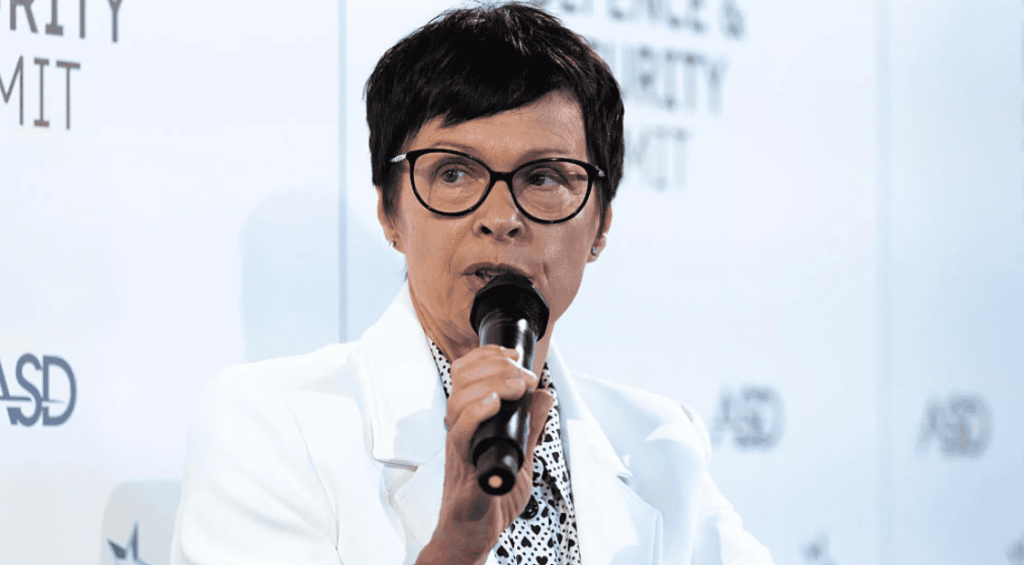Candidate countries remain far from European Union averages in terms of GDP per capita and their demographic and labour market characteristics.
In this analysis, we examine selected income, demographic and labour market indicators for nine actual and potential candidates for European Union membership. Our country group includes the six Western Balkan countries (Albania, Bosnia and Herzegovina, Kosovo, Montenegro, North Macedonia and Serbia) and three EU Eastern Partnership countries (Georgia, Moldova and Ukraine). We gauge how far they are from the EU average on the indicators, and whether and to what extent the gap has shrunk since 2003 (when the EU Thessaloniki Summit offered potential EU accession to Western Balkan countries1). We also examine differences between candidates and compare them with the three newest EU member states: Bulgaria, Romania (both joined the EU in 2007) and Croatia (an EU member since 2013).
Despite a shared post-communist legacy, EU candidate countries are not homogeneous. They emerged from distinct historical and economic systems: the Soviet Union, communist Yugoslavia and isolated Albania. These backgrounds have shaped their economic structures and integration paths, with the post-Yugoslav states and Albania receiving EU accession offers two decades before Ukraine, Moldova and Georgia. Today, renewed momentum for enlargement is driven not only by long-term convergence goals but also by geopolitical considerations following Russia’s invasion of Ukraine.
The authors thank Zsolt Darvas, Hans Geeroms, Jacob Funk Kirkegaard, Ivo Maes, Petros Mavroidis, Francesco Papadia, Nina Ruer, Nina Vujanovic and Jeromin Zettelmeyer for their comments.
Income per capita convergence
In GDP per capita terms, since 2003, all candidate countries except Ukraine have converged somewhat towards the EU average, but starting from a low level (Figure 1). In 2024, Montenegro and Serbia recorded the highest GDPs per capita (roughly half the EU average), followed by Georgia (45 percent) and North Macedonia (44 percent). Moldova, Kosovo and Ukraine had the lowest levels of 29 percent, 30 percent and 31 percent of the EU average, respectively.
In 2024, except for Georgia and Kosovo, income per capita in Western Balkan countries was higher than in the Eastern Partnership countries. This difference can be explained by higher starting levels of GDP per capita and faster convergence.
Between 2003 and 2024, Georgia progressed most rapidly (by 29 percentage points (pp) of the EU average), followed by Serbia (18 pp), Albania and North Macedonia (both 16 pp), Kosovo and Moldova (both 13 pp), Bosnia and Herzegovina (11 pp) and Ukraine (1 pp).
Ukraine is a special case. Between 2003 and 2008, it was among the three countries with highest GDP per capita in our sample. However, it has experienced three de-convergence periods in 2009 (consequences of a global financial crisis), 2013-2015 (effects of domestic political instability and the first stage of Russian aggression) and 2022 (the full-scale Russian aggression).
Figure 1: GDP per capita in constant prices, in PPP 2021 international dollars, % of EU average, 2003-2024

Source: Bruegel based on IMF World Economic Outlook database, April 2025. Note: Data for Montenegro is incomplete (only for 2023-2024). EU average refers to the EU27 average.
That the Western Balkan countries have converged more rapidly with the EU average than the three Eastern Partnership countries can be explained by geopolitical circumstances, by the earlier start of their EU integration processes and earlier conclusions of Stabilisation and Association Agreements with the EU, and by slightly better business and investment climates. These resulted in larger inflows of foreign direct investment and more trade with the EU (Dabrowski and Moffat, 2024).
The rapid GDP per capita convergence of the three newest EU countries suggests EU integration plays a positive role in growth acceleration. Between 2003 and 2024, the gaps between them – especially Bulgaria and Romania – and Western Balkan countries increased. GDP per capita in Bulgaria and Romania grew by 26 pp and 30 pp of the EU average, respectively.
Significant population declines
Unlike the EU, all candidate countries except for Montenegro (has which benefitted from incoming migration from, among others, Russia) have suffered from depopulation (Figure 2). Between 2003 and 2023, Bosnia and Herzegovina’s population declined by 24 percent, followed by Ukraine (-22 percent, mostly in 2022-2023 because of the full Russian invasion), Moldova (-16 percent), Serbia (-12 percent), Albania and North Macedonia (both -10 percent), Georgia (-6 percent) and Kosovo (-4 percent). The newest EU countries have seen similar trends: Bulgaria has lost 18 percent of its population, Romania 12 percent and Croatia 11 percent.
Figure 2: Total populations, 2003-2023, 2003=100

Source: Bruegel based on World Bank World Development Indicators up to 6 May 2025.
Figure 3: Fertility rate, total (births per woman), 2003-2023

Source: Bruegel based on World Bank World Development Indicators, up to 6 May 2025.
Depopulation is a consequence of declining fertility rates, limited progress in increasing life expectancy and net outward migration. Fertility rates in the analysed countries have been converging to the EU level, below the replacement level of 2.1 births per woman. Figure 3 suggests that some countries, in particular, Kosovo, Georgia and Albania, saw delayed fertility rate declines compared to the other countries in the sample and the EU.
In 2023, the EU candidates with the highest rates were Georgia (1.81), Montenegro (1.74) and Moldova (1.73). All countries, except Ukraine and Albania, reported fertility rates above the EU average of 1.39. Ukraine’s fertility rate below 1 in 2022-2023 can be explained by the ongoing war. Interestingly, fertility rates in the newest EU countries either improved (Bulgaria and Romania) or stabilised (Croatia), in line with Kirkegaard’s (2025) findings on a limited fertility rebound in EU new countries during and after EU accession.
Female life expectancy at birth has improved in most candidate countries but remains below the EU average of about 84 years (Figure 4), and the gap has not decreased. In 2023, it ranged from approximately 75 years in Moldova to 81 years in Albania and Kosovo. Bulgaria, Croatia and Romania have seen trends similar to their Western Balkan neighbours.
Figure 4: Female life expectancy at birth, 2003-2023

Source: Bruegel based on World Bank World Development Indicators, up to 6 May 2025.
The gap in a male life expectancy at birth (Figure 5) looks even more dramatic, except for Albania. The difference compared to both the EU average and female life expectancy is particularly large in Georgia, Moldova and Ukraine, following the same phenomenon in other post-Soviet countries (Gao, 2015) and suggesting poor quality healthcare services and unhealthy lifestyles (for example, alcohol abuse). Interestingly, while Croatia’s male life expectancy is within the range recorded by Western Balkan countries, Bulgaria and Romania’s are closer to post-Soviet countries.
Figure 5: Male life expectancy at birth, 2003-2023

Source: Bruegel based on World Bank World Development Indicators, up to 6 May 2025.
Labour market
Labour force participation (LFP) rates have generally increased in EU candidate countries, compensating partly for shrinking working-age populations. However, progress remains uneven and gender disparities persist (Figures 6 and 7).
Female LFP has risen in most analysed countries. Moldova and Albania recorded the most visible gains. In Moldova, it increased from 60.5 percent in 2003 to 72.7 percent in 2024, and in Albania from 54.5 percent to 64.6 percent over the same period. A higher rate is also visible in Serbia. However, in Bosnia and Herzegovina, Montenegro and North Macedonia, female LFP remains below 55 percent, well below the EU average of 70 percent.
Historically, female LFP rates were much higher in the former Soviet Union than in the former Yugoslavia, and even higher than in the EU. However, these differences have partly diminished over time (Figure 6). Bulgaria has converged to the EU average while the female LFP rate in Croatia in 2024 was only slightly higher than in Serbia. Romania’s rate was 57 percent in 2024, with slow growth from 2003.
Figure 6. Labour force participation rate, % of female population aged 15-64, 2003-2024

Source: World Bank World Development Indicators, last updated on 6 May 2025. Note: Modelled ILO estimates. Data for Kosovo is not available.
Male LPF rates have been higher (Figure 7), typically above 70 percent to 75 percent, but have plateaued or declined in some countries, particularly Georgia and Ukraine. In Bulgaria and Romania, these rates have also converged towards the EU average level. The gender gap in participation is still 15 to 20 pp in most candidate countries. In the EU, it was 9.5 pp in 2024.
Unsurprisingly, declining working-age populations have helped mitigate high unemployment, especially in the Western Balkans (Figure 8). Although unemployment rates in candidate countries (except Moldova) in 2024 were still higher than the EU average and the three comparator EU countries, there was significant improvement compared to the situation a decade or two earlier. For example, North Macedonia reduced its total unemployment rate from 37.3 percent in 2005 to 13.4 percent in 2024, Serbia from 24 percent in 2012 to 7.4 percent in 2024, and Bosnia and Herzegovina from 31.1 percent in 2006 to 10.7 percent in 2024.
Figure 7: Labour force participation rate, % of male population ages 15-64, 2003-2024

Source: World Bank World Development Indicators, last updated on 6 May 2025. Note: Modelled ILO estimates. Data for Kosovo is not available.
Figure 8. Unemployment, % of total labour force, 2003-2024

Source: World Bank World Development Indicators, last updated on 6 May 2025. Note: Modelled ILO estimates. Data for Kosovo is not available.
Youth unemployment remains the most entrenched challenge. In 2024, rates exceeded 25 percent in most Western Balkan countries, roughly 10 pp above the EU average, and higher than in Bulgaria, Croatia and Romania (Figure 9). While long-term improvements are visible, the pace of convergence is slow, and youth joblessness remains a major source of economic and social vulnerability.
Figure 9: Youth unemployment, % of total labour force aged 15-24, 2003-2024

Source: World Bank World Development Indicators, last updated on 6 May 2025. Note: Modelled ILO estimates. Data for Kosovo is not available.
Conclusions
The economic convergence of EU candidates with the EU average, measured by GDP per capita in constant prices and 2021 PPP international dollars, has progressed since 2003, partly because of declining populations in candidate countries. However, the substantial income gap between the candidates and the EU remains. The candidate country with the highest GDP per capita, Montenegro, reached only half of the EU average in 2024.
GDP per capita convergence could have been more rapid had the EU enlargement process moved faster. The performances of Bulgaria, Romania and Croatia, and of countries that became EU members in 2004, support this hypothesis (Beyer et al, 2025; Izvorski and Madjoska, 2025; Darvas, 2024). Full access to the European single market and the EU budget, and institutional harmonisation resulting from the adoption of the EU acquis and other reforms, accelerated the growth paths of new EU members. The three Eastern Partnership countries have been even more disadvantaged because they concluded association and free trade agreements with the EU a decade later, and got membership offers two decades later, than the Western Balkan candidates. The ongoing Russian aggression, meanwhile, has handicapped not only Ukraine but also neighbouring Moldova (Lupusor et al, 2025).
Demographic and labour market indicators determine potential growth. All candidate countries except for Montenegro have experienced depopulation caused by negative natural population growth and net emigration. A declining working-age population has helped mitigate historically high unemployment in the former Yugoslavia, although youth unemployment remains a challenge. Gradually increasing labour market participation rates have helped mitigate somewhat declining working-age populations and population ageing.
There are differences in terms of demographic and labour market indicators between the former Soviet Union and former Yugoslavia, going back to the communist era. For example, female LFP rates are higher and unemployment lower in post-Soviet candidate countries, but so are their male life expectancies.
Source : Bruegel



































































